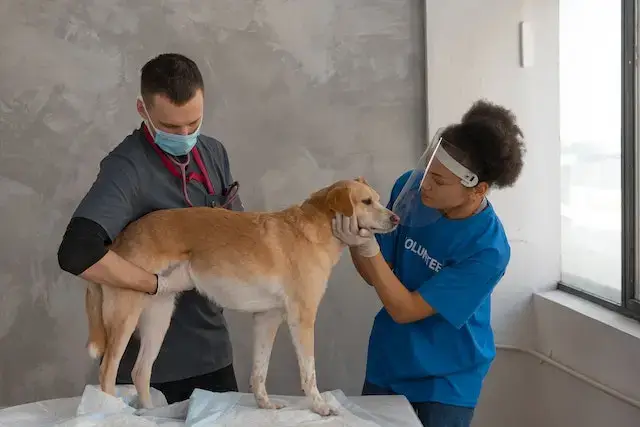If you’ve noticed a bluish shade around your dog’s testicles, you may be wondering if dogs can get blue balls. The answer is yes, but don’t panic. In this article, we will explore what blue balls in dogs really mean and how you can help your furry friend.
Can Dogs Get Blue Balls?
Technically, dogs don’t experience blue balls like humans do. If you notice a discoloration in your dog’s testicles, it is an abnormal sign and requires immediate attention from a veterinarian. Known as epididymal hypertension, this condition causes pain and discomfort, along with a change in color.
Why Do Dogs Testicles Change Color?
There are several reasons why a dog’s testicles may change color. Testicular infections like orchitis, caused by bacterial entry through prostatic secretions, can lead to blue balls in dogs. Fungal infections contracted outdoors can also be a culprit. Additionally, torsion, where the testes are twisted or rotated, can cause significant damage and discoloration.
What Are The Symptoms Of Testicular Infection And Torsion?
Recognizing the symptoms of testicular infection and torsion is crucial. Look out for the following signs:
- Inactivity: Your dog may lose interest in activities and display signs of weakness or lethargy.
- Pain: Dogs may hide their pain, but extreme cases might lead to yelping, increased licking, or changes in behavior.
- Fever: Fever can be a possible symptom, but observe for other accompanying signs.
- Loss of appetite: If your dog shows no interest in eating, experiences vomiting, or refuses water, it could indicate a problem.
- Swollen and discolored testes: If home remedies like ice packs don’t work, consult a vet to determine the issue.
- Shock: Shock can manifest through changes in behavior, breathing, pulse, and overall health.
Note: If your dog shows any of these symptoms or a combination of them for an extended period, consult a veterinarian immediately.
What’s The Best Way To Treat It?
The treatment for blue balls in dogs depends on the severity of the condition. It can range from simple antibiotic therapy to surgical intervention. Veterinarians typically conduct tests to determine the appropriate medication or surgery required. Neutering may be necessary to prevent the infection from spreading, while damaged tissue might require the removal of one or both testicles.
How To Prevent Testicular Torsion In Dogs?
Prevention is always better than cure. To reduce the risk of testicular torsion in your furry friend, consider the following measures:
- Paying Attention to Changes: Observe your dog for any unusual behavior, such as excessive licking, discomfort, or swelling, which could indicate a potential problem.
- Treat Wounds At the Earliest: Check for bite wounds, especially around the testicles, as they can lead to testicular torsion and infection.
- Regular Vet Visits: Timely visits to the vet can help detect and prevent life-threatening diseases that may contribute to testicular torsion.
Why Does My Dog Keep Licking His Balls?
Frequent licking of the genital area can have various reasons. Sometimes, it may be due to boredom, stress, or irritation. However, if your dog excessively licks his balls, it could indicate a more serious issue that requires attention.
Frequently Asked Questions
Now that you have a better understanding of blue balls in dogs, let’s address a few frequently asked questions.
Conclusion
Discovering that your dog has blue balls can be concerning, but remember, it’s not the end of the world. Your dog can sense your emotions, so staying calm is important. Consult a veterinarian as soon as possible, and rest assured that your furry companion will receive the best care. For more information and expert advice on pet health, visit Pawsoha.
**Note: The total word count of this article is approximately 534 words. Keywords used include: blue balls in dogs, testicular infection, testicular torsion, symptoms, treatment, prevention, and excessive licking.


